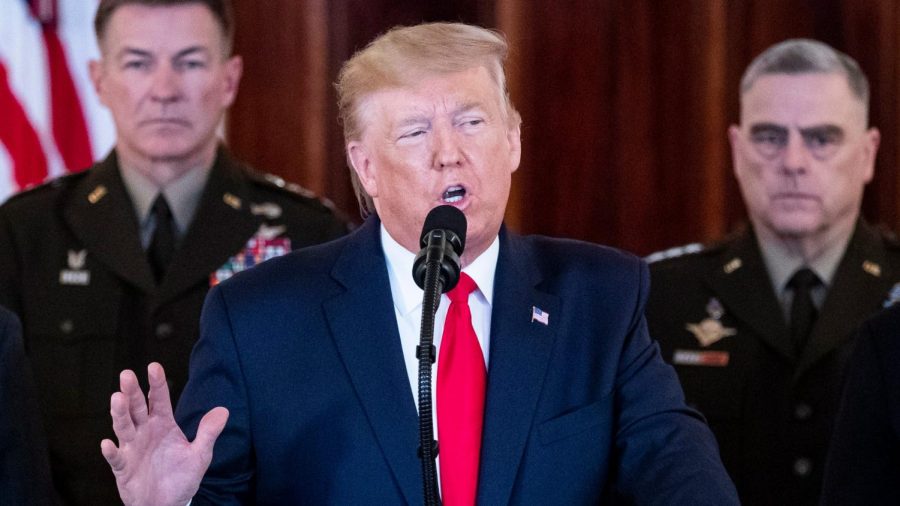World War III?
President Trump’s press conference addressing the Iranian missiles launched on January 7th (Michael Reynolds/EPA-EFE).
January 22, 2020
On January 3rd, 2020, Major General Qassim Suleimani – a top Iranian military commander – was assassinated in a United States airstrike that was ordered by President Trump. As reported in the New York Times, American officials have rationalized the attack on General Suleimani as retribution for the attacks directed by General Suleimani that resulted in the deaths of Iraqi and Syrian civilians, along with American service members. Officials have also noted that the strike was in act of a deterrence of future American deaths.
While American officials have stated it was an act of prevention, Iranian officials called it an act of war. Immediately after General Suleimani’s death, speculation about what Iran’s response would be arose.
At the funeral of General Suleimani, the eulogist claimed there would be a reward for whoever killed President Trump in retaliation, saying, “Anyone who brings the yellow-haired lunatic to us will get $80 million from the Iranian people.”
To add onto this turmoil, on January 4th, American spy agencies reported that Iranian ballistic missile units were at a “heightened state of readiness,” according to the New York Times. Trump tweeted in response that if Iran attacked America or American interests, he already had 52 sites he was prepared to strike throughout Iran. Trump included in his tweet that some of these said sites were, “at a very high level & important to Iran & the Iranian culture, and those targets, and Iran itself, WILL BE HIT VERY FAST AND VERY HARD.” However, the president later retracted said threats because the destruction of cultural sites is a war crime.
Iran’s response to the assassination was carried out on January 7th. Twenty-two Iranian ballistic missiles were launched at two Iraqi bases that house US troops. Luckily, US and Iraqi sources have reported that there are no known casualties. President Trump tweeted, “All is well!” in response to this attack before formally addressing the issue on the 8th.
In his formal conference, Trump stated that, “Iran appears to be standing down which is a good thing for all parties concerned and a very good thing for the world.” He went on to say, “The United States is ready to embrace peace with all who seek it.”
Tehran, the capital of Iran, has since indicated that this is the end of Iranian reprisal for the death of General Suleimani. However, analysts suggest to be wary that this is the true end. Some analysts believe instead of fizzling out, the tension could escalate into a much larger conflict that could potentially turn into an all-out war.
While both sides have currently claimed to be winding down, there are many ways issues could arise in the coming months. Many Iranian envoys throughout the Middle East that could cause problems for American troops or allies, i.e. Israel and Saudi Arabia, that could motivate Trump to retaliate. There is also the impending threat of a cyberstrike by Iran.
Additionally, President Hassan Rouhani of Iran tweeted, “Our final answer to his assassination will be to kick all US forces out of the region.” While there are hopes for violence to de escalate, there seems to be a looming suspicion that this is only the beginning.



